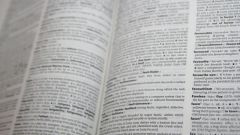You will need
- Computer;
- - access to the Internet;
- e - mail or a printed directory of organizations in your city.
Instruction
1
Find out which translation of the diplomaand you want: the ordinary translation, notarized or with an apostille. Apostille is a special stamp by which the document is legalized and does not require further certification in the countries of the Hague agreement, such as the USA, Australia and others.
2
The affixing of this seal requires additional costs and is not always necessary, so please check with the organization where you will provide a diploma (University, Embassy or company) as is necessary to certify the translation of your documents.
3
If you need notarized, find a notary. For a simple notarized diplomaand you must provide to the notary a photocopy of the original document. Certifying the signature and stamp put on the copy after comparison with the original. If you need an apostille, then he is placed on the original document.
4
Give your certified copies and originals in translation. Addresses and phone numbers of translators can be found in the databases of organizations or in printed directories. Calling several organizations, you can find the best offer as for the cost of services and speed of order fulfillment.
5
By the time of transmission of documents it is desirable to have a passport to in the translated documents were correct transliteration of your name.
6
After a set period, usually within a few days, receive your documents and finished translations.
Note
If you have ordered a certified translation, keep it as original. In different organization, you have the right to submit copies of your documents. The production of a new certified translation of the diploma will be a loss of time and money.
Useful advice
If you have the opportunity, assure and translate my diploma in Russia. The services of notaries and translators in an English speaking country will cost more.

